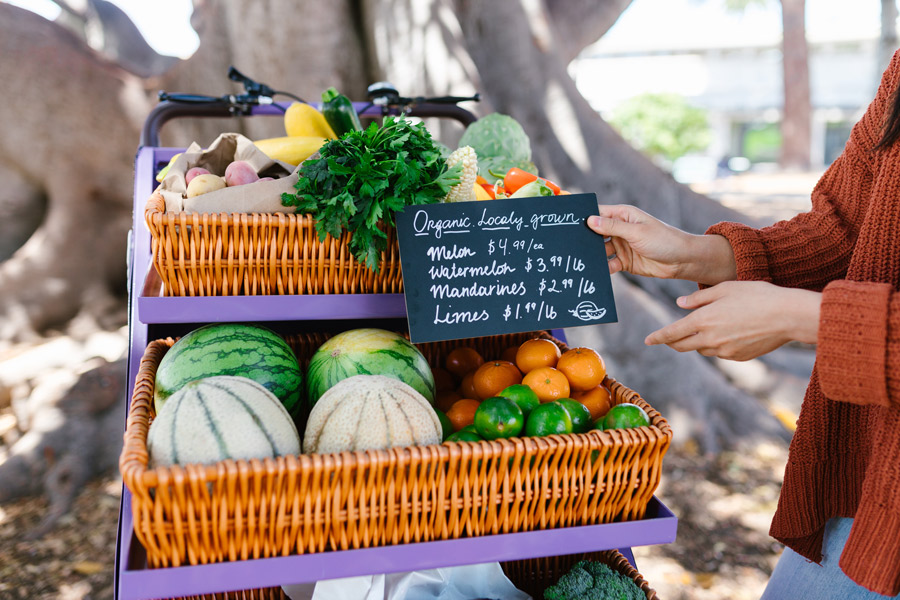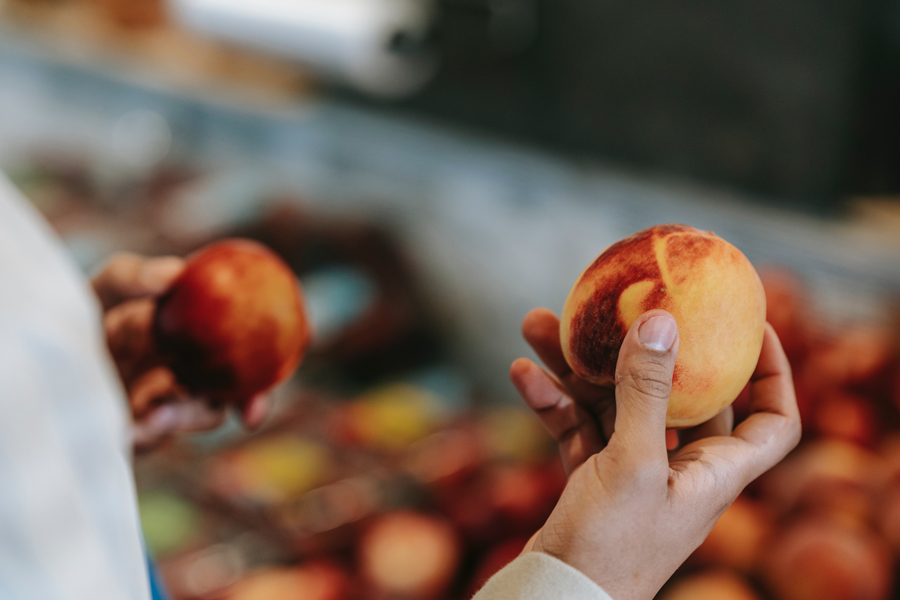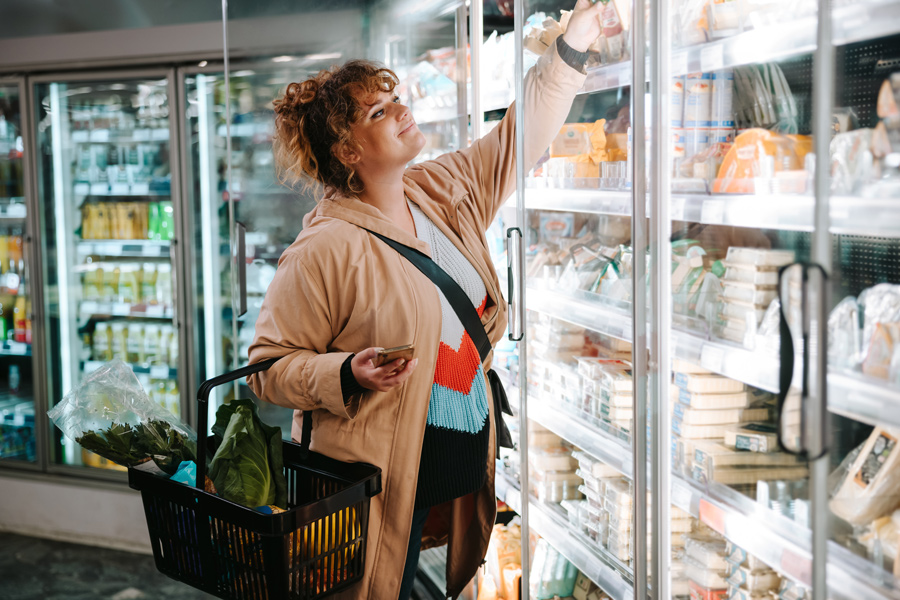Consumer values are the new shopping currency in the grocery aisle today, driving nearly half of all consumers to make purchases based on a higher purpose. It’s no longer just about filling the cart; it’s filling the soul. From supporting women – and LGBTQI+-owned food brands to seeking sustainable, locally sourced, or fair-trade ingredients, consumers are putting their purchase power to work to support businesses with the values they find important.
The Conscious Consumer
Consumers today seek greater transparency in the food production process. They want to know where their food comes from, how it was grown or raised, and the ethical and environmental practices employed by the brands they support. Thanks to digital media and easier access to information, shoppers can quickly dig into a company’s practices—right from the grocery aisle. With greater visibility into a company’s practices, shoppers can make more informed choices. Brands that champion transparency about sourcing, manufacturing, and social impact are more likely to win the trust of values-driven shoppers.
Will grocers answer the call of consumers for whom groceries aren’t mere items in a cart, but badges of honor in a quest for a better world? Let’s take a closer look at how consumer values impact grocery shopping trends.

Organic and Sustainable Products
Once limited to specialty stores or farmers’ markets, organic and sustainable food has evolved from a pricey niche movement to mainstream consumer purchases. Organic and sustainable food products are one of the biggest consumer value shifts that have happened in the last several years, and consumers continue to prioritize buying organic food. Increased awareness of the environmental and health impacts of conventional farming practices is just one factor pushing shoppers toward organic labels.
Younger generations, particularly climate change warriors Millennials and Gen Z, have been instrumental in driving the demand for organic and sustainable food—which shouldn’t come as a surprise to anyone watching these cohorts. According to a recent study, 21 percent of Millennials surveyed say they are more likely to make food purchases that connect with their beliefs. This group tends to prioritize health, environmental issues, and social responsibility, influencing the overall market and shaping industry practices.

Local and Seasonal Foods
Sure, you can buy bananas in a Midwest grocery store in the winter, but proponents of fresh local, seasonal foods instead shop to reduce their carbon footprints and support local farmers by eating seasonally. There are many benefits to shopping for seasonal foods in terms of freshness, taste, and resource efficiency.
Local and seasonal foods often come from smaller-scale farms that may use more sustainable or regenerative agricultural practices than conventional farms. When value-driven consumers eat seasonally, they are aligning with a more responsible approach to consumption.
Eating seasonally promotes farming in your area through the reduction of demand for farm produce that is out of season. This means that there will be reduced carbon footprint due to less transportation and refrigeration which all contribute to the emission of greenhouse gases.
- Simply Eco Store
Animal Welfare
Another way consumers are putting their money where their values are is by choosing companies and products that have standards in place to ensure the welfare of both workers and animals. And retailers should listen up—eight out of 10 values-oriented shoppers say animal welfare, environmental welfare, labor/worker welfare, and ingredient sourcing are worthy of paying a premium. Those shoppers are looking to grocers and product brands to help them easily identify these attributes through clear, honest labeling and in-store communication.
Concern for animal welfare, environmental sustainability, and personal health has also led to an increase in plant-based foods and lab-grown meat. The global vegan food market is expected to grow at a CAGR of 10.2% from 2022 to 2028; it is estimated to grow from USD 17 billion in 2022 to more than $31 million in 2026.

Health and Nutrition
A focus on healthy eating is shaping the way consumers approach their food choices. According to Grocery Dive, more than half of Millennials (52%) and 42% of Gen Z say they are willing to buy the best quality ingredients, regardless of price (compared to only 22% of Baby Boomers).
The “food as medicine” movement is a return to simplicity that emphasizes the therapeutic potential of nutrition and its role in preventing and managing various health conditions. More than 48 million households have a member with a health condition that needs to be managed through diet, representing 60% of Americans and nearly $270 billion in annual grocery sales. Grocers have an opportunity to gain loyalty by speaking to the consumer’s desire to simplify, incorporating better ingredients, and advocating for real food.
Ethical and Social Responsibility
For most grocers these days, social and environmental stewardship is table stakes, but still, some are not doing it well. Whole Foods Market, Wegmans, and Misfits Market are among the grocers lauded for their commitment to corporate social and environmental responsibility. By working only with suppliers that adhere to high standards of social responsibility and environmental stewardship, these stores also support local producers and sustainable practices, surely drawing attention from values-based shoppers.
More than ever, shoppers are intent on supporting companies that align with their ethical and social values. Brand value alignment as a factor in purchasing grows more significant with Gen Z; 30% of that segment of consumers make decisions about what they buy based on the social and political beliefs of the retailer.
That generation is also more likely to engage directly on social media with the brands it patronizes, expressing appreciation for ethical practices or even scorning brands with practices they consider unethical. Engagement and transparency are critical to attracting and retaining this group of consumers. Sure, price may still play into the final purchase decision, but these consumers vote with their wallets, supporting (and often paying more) to companies that go above and beyond to align with their values.
Packaging and Food Waste Reduction
Both excessive packaging and food waste contribute significantly to environmental problems. That said, consumer concerns about excessive packaging and food waste are growing, as is a preference for minimal packaging and recyclable and biodegradable materials. A 2021 EPA report estimates that U.S. food loss and waste produces the equivalent of the annual carbon dioxide emissions of 42 coal-fired power plants, and enough water and energy to supply more than 50 million homes. And that’s not even including the impact of food that rots in landfills, producing methane, an even more potent greenhouse gas.
It’s no surprise, then, that climate change is on the minds of consumers as they make their food choices. Among Americans recently surveyed by McKinsey, 43 percent say environmental impact is an extremely or very important packaging characteristic when making a purchasing decision.

Values by Association
There are a couple of things brands and retailers should glean from all this:
- Shoppers are looking for brands with values that align with their own and that no longer means wants like fashion— it’s so important that it also applies to needs like food.
- Grocers can no longer look away or play dumb. If they don’t carry products that match the values of health-conscious, environmentally-conscious, socially-conscious, etc. individuals, they will find what they seek elsewhere.
- Don’t doubt that consumers are willing to act on this sentiment with three-quarters of shoppers surveyed by Retail Touchpoints saying they had parted ways with a brand over a conflict in values.
- Brands and retailers should recognize that consumers are not merely looking for products; they are looking for a deeper connection with the companies behind those products. Values-based marketing, which involves aligning a brand’s messaging and actions with its customers’ values, can be a powerful strategy to build that connection.
How are grocers encouraging the community to rebuild the shopping experience?
Read all about the use of thoughtful third spaces in grocery stores. >





